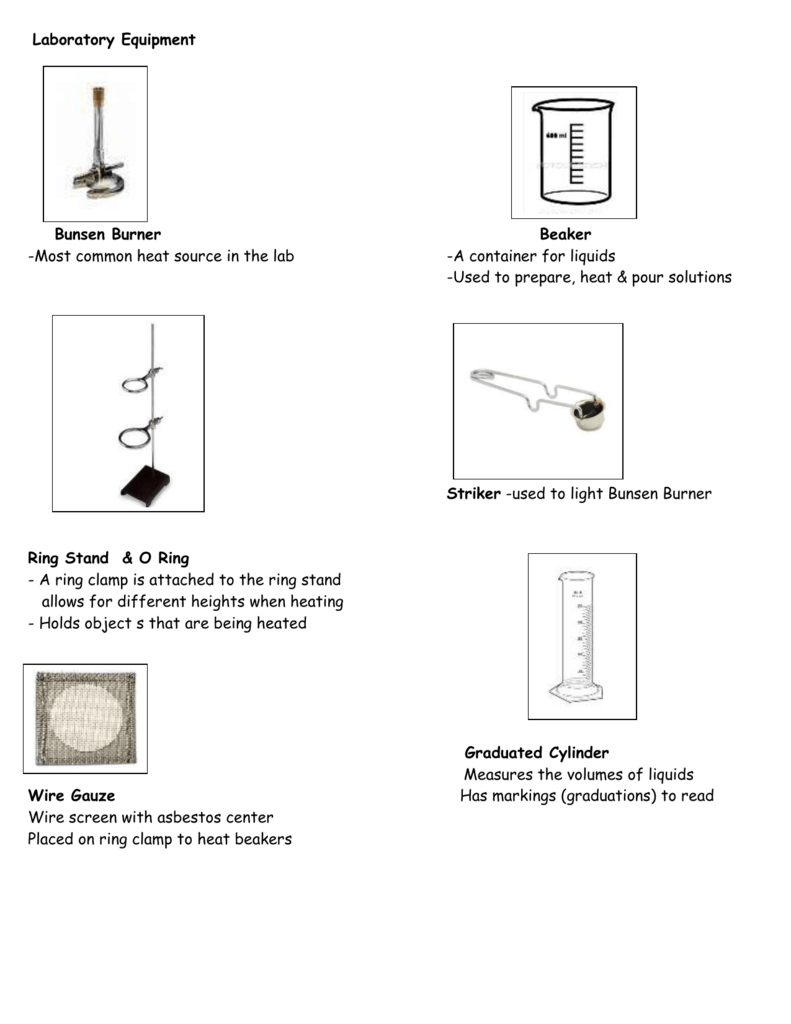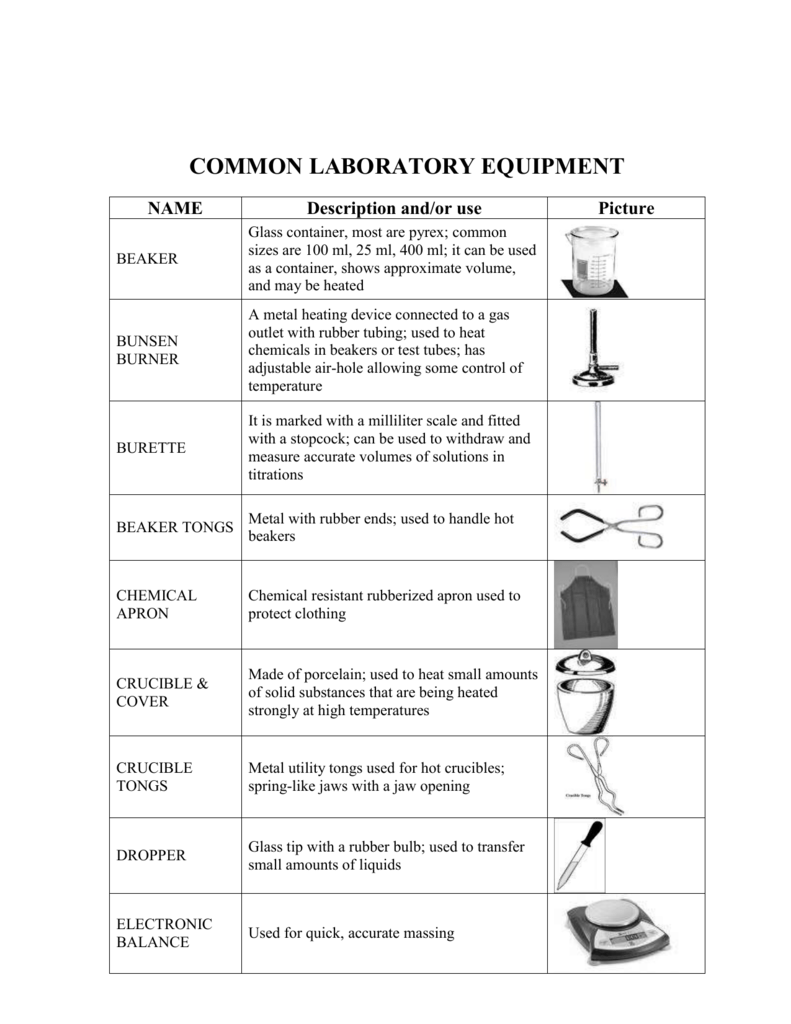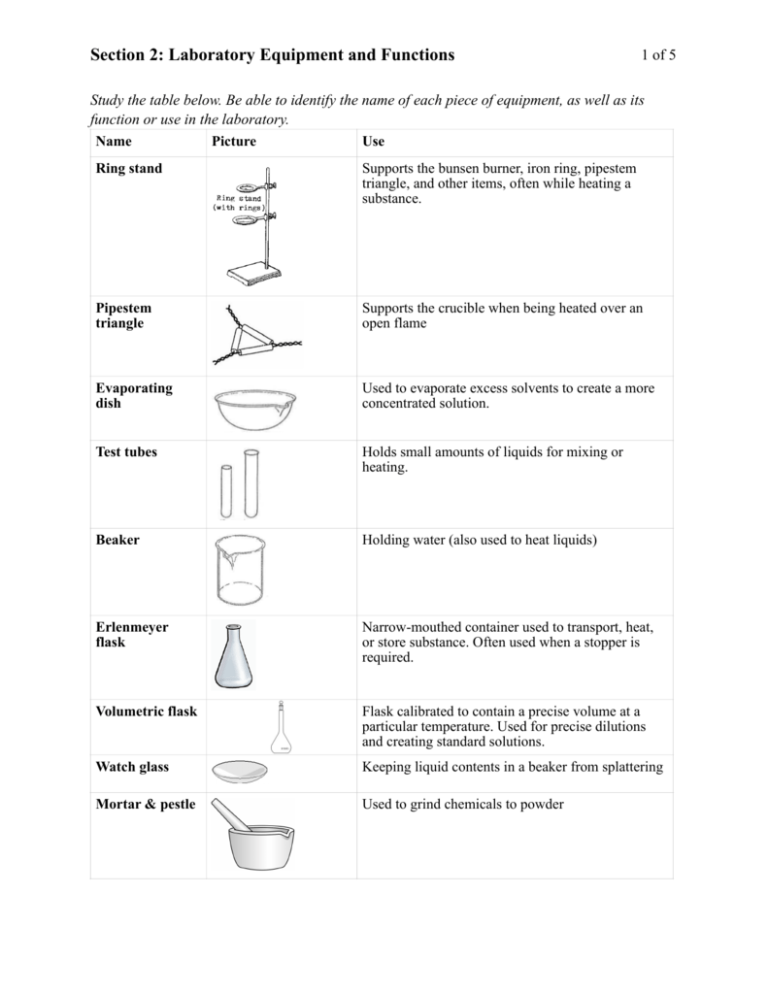Covering a beaker of boiling water to prevent splattering 10. Ensure any newly purchased hot plates are designed in a way that avoids electrical sparks.
Name Picture Use Ring stand Supports the bunsen burner iron ring pipestem triangle and other items often while heating a substance.

. Heating contents in a test tube. Test tubes beakers and pipettes among other things. A thermometer is used to measure the temperature of liquids as well as other compounds.
They can also be sterilized by heat if needed. By adjusting the stopcock the amount of liquid that is released can be slowed to a drop every few seconds. General Purpose Water Baths.
Round bottom flask 6. A calorimeter is a device used to measure the heat change or heat capacity of chemical reactions or. A pipette also known as a chemical dropper is a glass or plastic tube used to suction.
59 a Bunsen burner. Rinsing out glassware with distilled water 12. Finally the wide opening makes it easy to add materials to the beaker.
Due to the above reasons lab glassware is quite famous. A Bunsen burner a small fire What is used to hold small amounts of liquid in a science lab. Used to hold mix and heat liquids.
These five pieces of laboratory equipment are needed to hold a test tube in a beaker of boiling water above a Bunsen burner 11. Water Bath Fluids Conditioners Additives. A simple container for stirring mixing and heating liquids commonly used in many laboratories and are generally cylindrical in shape with a flat bottom.
Be able to identify the name of each piece of equipment as well as its function or use in the laboratory. Immersion Heater Compare this item. 1500 watts 115 volts.
First is the Bunsen burner developed by none other than its. Pipettes Burettes and Funnels. The common heating devices used in labs are bunsen burners hot air ovens hot plates heating mantles muffle furnaces hot oil baths and microwave digestion systems.
8A magnifying glass Microscopes can often be replaced with a magnifying glass. Holding many test tubes filled with chemicals. Used to pour liquids into containers with small openings or to hold filter paper.
All unattended electrical heating equipment should be equipped with an automatic over-temperature shutoff switch in addition to normal. The selection of a device depends on the application in hand. A platinum crucible and plate used to prepare fused beads.
A cone-shaped container with neck so you can hold the flask or attach a clamp or use a stopper. Burets are set up by using a buret clamp in combination with a ring stand discussed below. Its a concave piece of glass customarily used to hold solids evaporate liquids and heat small quantities of a substance.
Heating Dissection Equipment Speaking of heating things in the lab there are a few handy pieces of equipment that serve this purpose. What is used for heating small amounts of liquid. Indirect heating systems such as hot water are preferred over systems with heating elements or flames.
Lab Equipment Used for Liquids Thermometer. So let us see them one by one Lab glassware used in most labs 1 Glass Beaker 2. The flat bottom of a beaker makes it easy to place on flat surfaces such as a lab bench or a hot plate.
Ring stand iron ring wire gauze. The spout makes it easy to pour liquids into other containers. See Electrical for information about how to make electrical equipment safe for use.
Ideal for heating liquids of all types in laboratory and industrial use Heating element is polished Type 316 stainless steel Design permits hanging over edge of vessel Elements are contained in coil section to concentrate heat at bottom of vessel Risers are unheated. Recirculating Thermostats Heating Cooling. A watch glass is a popular type of chemistry lab instrument.
Test tube clamps or utility clamp. Laboratory hot plates are normally used for heating solutions to 100 o C or above when inherently safer steam baths cannot be used. Heating exposes you to burns and boils resulting from contact with hot surfaces boiling liquids vapours or flames.
They are wider and bigger than regular test tubes and they have a flat bottom. A centrifuge is a motorized piece of laboratory equipment which spins liquid samples to separate their components. Mixing a small amount of chemicals together.
Laboratory Equipment and Functions1 of 5 Study the table below. Most also have a small spout or beak to aid pouring. Microburners are also useful for heating boiling tubes and test tubes sealing the ends of melting point tubes making micropipettes for chromatography and bending the ends of Pasteur pipettes for special purposes.
Centrifuges come in two main sizes a tabletop version which is often called a microcentrifuge and a larger floor model. A liter beaker will be accurate to within about 100 ml of liquid. When you need to measure liquid to perform an experiment or chemical reaction you can use special containers called beakers.
A container used in heating an aqueous solution to drive off the water 13. Burets are one of the most accurate tools in the lab. 510 Heating an aqueous solution using a Bunsen burner.
A buret is used for extremely accurate addition of liquid.

Common Laboratory Apparatus And Their Functions O Level Secondary Chemistry Tuition


0 Comments